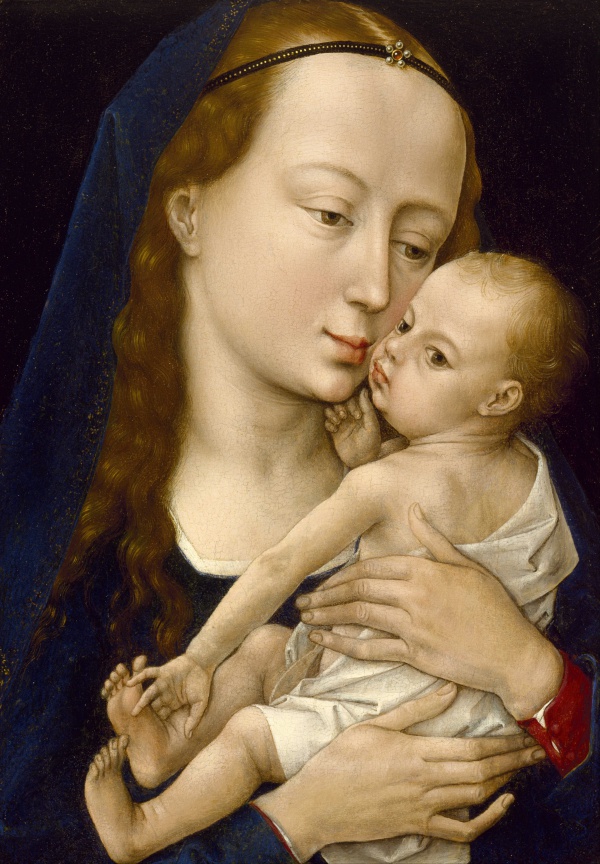Facts About Virgin and Child
The "Virgin and Child" painting by Flemish artist Rogier van der Weyden can be admired at the Museum of Fine Arts in Houston. Initially, there were doubts about the authenticity of this piece, with some experts suspecting it might be a replica. However, recent studies have confirmed that it is indeed an original work by van der Weyden.
What distinguishes this painting is its depiction of a half-length Madonna, a style that had fallen out of favor in the Lowlands before van der Weyden reintroduced it. The painting captures a tender moment, with the infant Christ nestled against the Virgin's shoulder in a contrapposto posture. The child's thoughtful gaze adds a unique touch to the composition.
Van der Weyden's work is thought to be inspired by the Italo-Byzantine Cambrai Madonna, an icon brought from Rome and placed in the Cathédrale Notre-Dame de Grâce de Cambrai. This Eleusa icon depicts the Infant pressed lovingly against the Virgin's cheek. While many artists simply replicated this icon, van der Weyden infused it with his own creative interpretation.
Scholars have attempted to date the painting by examining historical events and stylistic elements. They estimate that "Virgin and Child" was created around 1460, near the end of van der Weyden's career. The style of the painting, especially the features of the Virgin, resembles other works from that period, which supports this dating.

 Canada
Canada